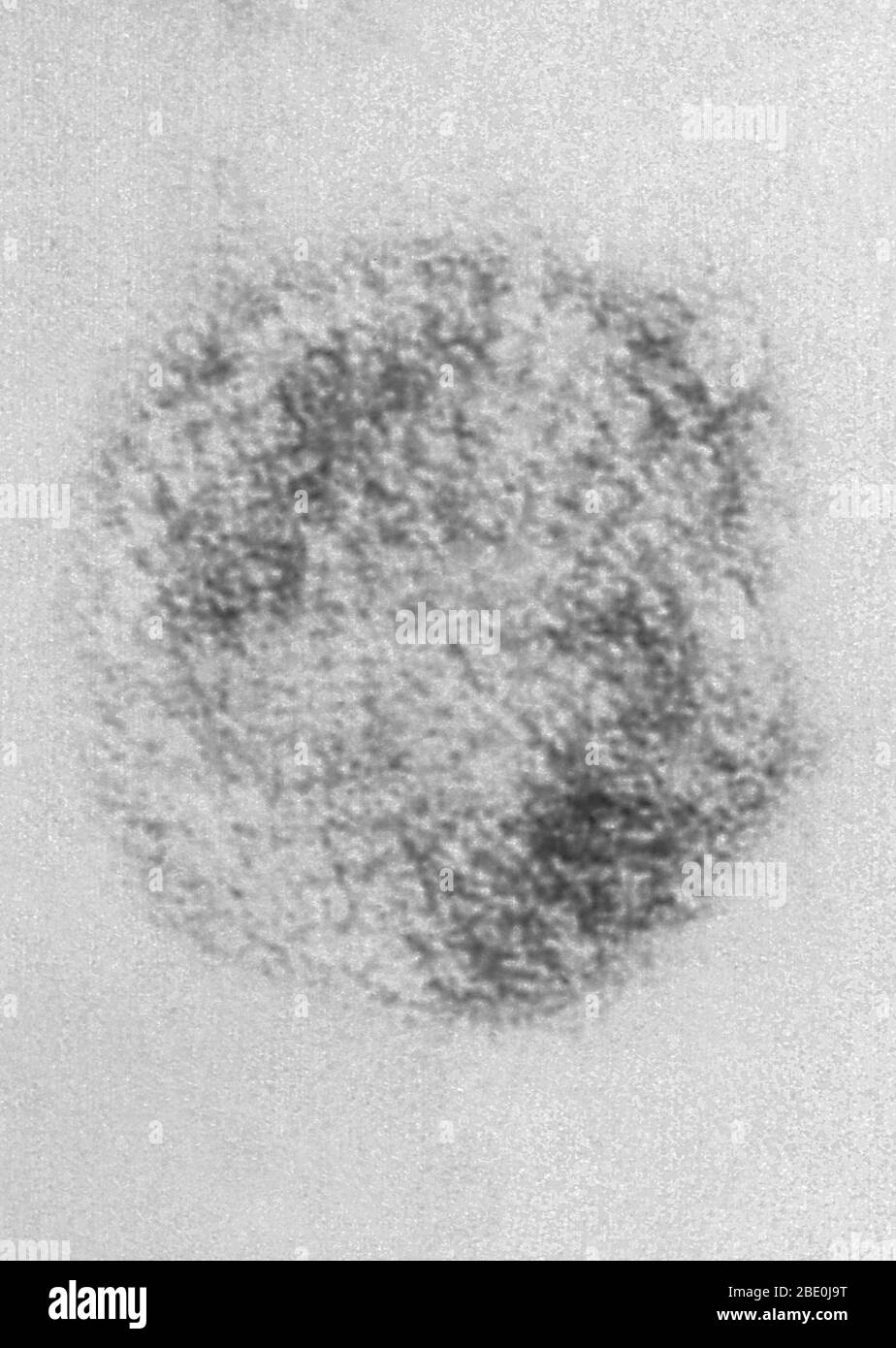Negative-stained Transmission Electron Micrograph (TEM) depicts Sin Nombre virus (SNV) virions, which are members of the genus Hantavirus, within the family Bunyaviridae. The Sin Nombre virus is the cause of hantavirus cardiopulmonary syndrome (HCPS), also referred to as hantavirus pulmonary syndrome (HPS), in humans. In November 1993, the specific hantavirus that caused the Four Corners outbreak was isolated. Using tissue from a deer mouse that had been trapped near the New Mexico home of a person who had gotten the disease, the Special Pathogens Branch at CDC grew the virus in the laboratory

Image details
Contributor:
Science History Images / Alamy Stock PhotoImage ID:
2BE0J9TFile size:
38.5 MB (1.4 MB Compressed download)Releases:
Model - no | Property - noDo I need a release?Dimensions:
3092 x 4350 px | 26.2 x 36.8 cm | 10.3 x 14.5 inches | 300dpiDate taken:
8 February 2012Photographer:
Photo ResearchersMore information:
This image could have imperfections as it’s either historical or reportage.
Negative-stained Transmission Electron Micrograph (TEM) depicts Sin Nombre virus (SNV) virions, which are members of the genus Hantavirus, within the family Bunyaviridae. The Sin Nombre virus is the cause of hantavirus cardiopulmonary syndrome (HCPS), also referred to as hantavirus pulmonary syndrome (HPS), in humans. In November 1993, the specific hantavirus that caused the Four Corners outbreak was isolated. Using tissue from a deer mouse that had been trapped near the New Mexico home of a person who had gotten the disease, the Special Pathogens Branch at CDC grew the virus in the laboratory. Shortly afterwards, and independently, the U.S. Army Medical Research Institute of Infectious Diseases (USAMRIID) also grew the virus, from a person in New Mexico, who had gotten the disease, as well as from a mouse trapped in California. The new virus was called Muerto Canyon virus, later changed to Sin Nombre virus (SNV). Magnification: unknown.